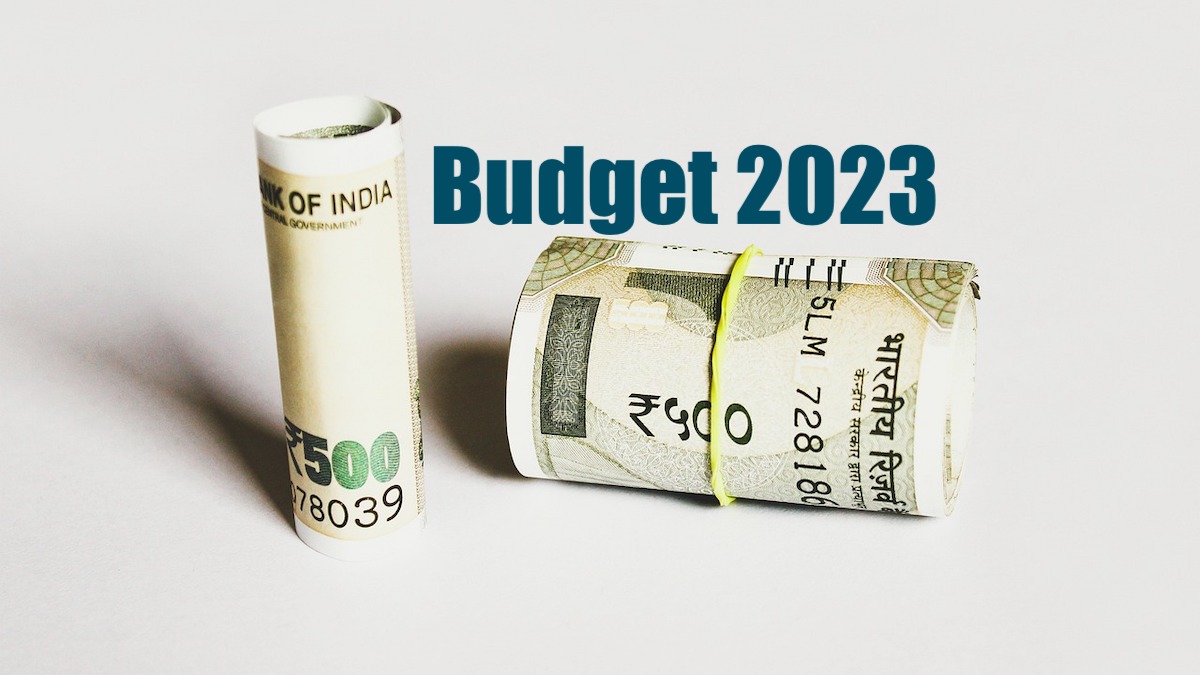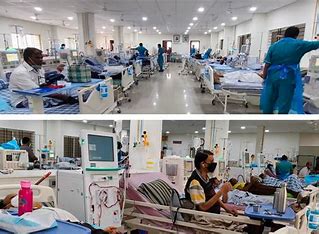
Call it a push for claiming India’s rightful place at the high table of global economic management spurred on by the G20 presidency, a case for disseminating the dividends of an internationally hailed quick recovery among the stakeholders or simply a poll bugle ahead of the 2024 race to Raisina Hill, Nirmala Sitharaman’s Budget 2023 is a bold narrative of a country that wants to go beyond a beacon light in an otherwise forecasted lacklustre growth landscape.
The ambition is justified against a backdrop of a transformational shift as detailed by the Finance Minister in her 5th Budget address. Per capita income has more than doubled to ₹1.97 lakh in around nine years, the Indian economy has increased in size from being 10th to the 5th largest in the world in the past nine years and underlined the strength of inclusive governance through a EPFO membership which has more than doubled to 27 crore.
While 9.6 crore LPG connections have been provided under Ujjwala, 47.8 crore own PM Jan Dhan bank accounts, there is insurance cover for 44.6 crore persons under PM Suraksha Bima and PM Jeevan Jyoti Yojana and cash transfer of ₹2.2 lakh crore to over 11.4 crore farmers has been achieved under PM Kisan Samman Nidhi.
The ambition to go forward is enshrined in ‘Saptarishi’, seven priorities outlined by the Finance Minister in the Budget, which will take India to the next trajectory of growth through inclusive development, infrastructure and investment, green growth, youth power, financial sector and by reaching the last mile as well as unleashing the potential.
All this is directed at giving a substantial growth impetus to the economy while at the same time maintaining a prudent fiscal framework and doing its best to make money work better. The Budget estimates for 2023-24 put the total receipts other than borrowings at Rs 27.2 lakh crore and the total expenditure at Rs 45 lakh crore. The net tax receipts are estimated at Rs 23.3 lakh crore and the net market borrowings from dated securities are estimated at Rs 11.8 lakh crore. The gross market borrowings are estimated at Rs 15.4 lakh crore.
The budget also pays heed to the need for fiscal consolidation in aiming at reducing fiscal deficit target to 5.9% of GDP in 2023-24 from 6.4% in 2022-23. The Government has targeted to bring down fiscal deficit below 4.5% by 2025-26.
“The Union budget has quite expectedly followed the path of fiscal prudence. By retaining the net borrowing of the government at almost the same level as last year, it has ensured that there is no pressure on the market which is presently challenged by liquidity availability, says Madan Sabnavis, Chief Economist, Bank of Baroda.
The growth centric budget builds on the strategy of high capex of Rs 10 lakh crore towards enhancing growth potential and job creation, crowding-in private investments and providing a cushion against global headwinds. An investment of Rs 75,000 crore, including Rs 15,000 crore from private sources is envisaged for 100 critical transport infrastructure projects, for last and first mile connectivity for ports, coal, steel, fertilizer, and food grains sectors.
A New Infrastructure Finance Secretariat will be established to enhance opportunities for private investment in infrastructure. “The capex spending budgeted in FY24 as compared to budgeted print of Rs 7.5 lakh crore in FY23, implies over 33% rise in FY24 BE over FY23 BE,” points out Chandrajit Banerjee, Director General CII who believes the continued thrust on capital expenditure will boost overall economic productivity, crowd in private investment, and drive growth through a multiplier effect.
The focus on capital expenditure on infrastructure would sustain recovery and create jobs at a time when the world is reeling under extreme global uncertainty and headwinds. Specifically, the increased allocation for ports, roads and the highest allocation for rail etc would raise the efficiency of logistics and supply chain that would spur manufacturing competitiveness.
Amidst headwinds which have slowed down India’s exports, states will be encouraged to set up a Unity Mall for promotion and sale of their own and also all others states’ ODOPs (One District, One Product), GI products and handicrafts. There have been legislative changes in customs laws with Customs Act, 1962 set to be amended to specify a time limit of nine months from date of filing application for passing final order by the settlement commission.
Customs Tariff Act will also be amended to clarify the intent and scope of provisions relating to anti-dumping duty, countervailing duty and safeguard measures. President, FIEO A Sakthivel feels many of the changes in the customs duties will help to provide competitiveness to manufacturing and exports besides attempting imports substitution.
“The increase in the allocation for the Interest Equalization Scheme from Rs 2376 crore in 2022-23 to Rs 2932 crore in 2023-24, up by 23%, will help in supporting exports particularly by MSMEs and may result in increasing the subvention support as demanded by the exporters in view of rising interest rates,” observed the FIEO Chief.
To strengthen MSMEs, the Budget has provided that 95 per cent of the forfeited amount relating to bid or performance security, will be returned to MSME’s by government and government undertakings in cases the MSME’s failed to execute contracts during Covid period. A revamped credit guarantee scheme for MSMEs is set to take effect from 1 April 2023 through infusion of Rs 9,000 crore in the corpus which would enable additional collateral-free guaranteed credit of Rs 2 lakh crore and also reduce the cost of the credit by about 1 per cent.
The Budget has also promised enhanced limits for micro enterprises and certain professionals for availing the benefit of presumptive taxation with the rider that increased limit would apply only in case the amount or aggregate of the amounts received during the year, in cash, does not exceed five per cent of the total gross receipts/turnover.
Shachindra Nath, Vice Chairman and Managing Director, U GRO Capital says the allocation of Rs. 9000 crore will give a big relief to MSMEs in the current inflationary conditions. “Presumptive taxation for micro-enterprises with a turnover of Rs. 2 crores, unified filing process, entity-based Digi lockers, and formation of National Financial Information Registry will enable better underwriting of credit to MSMEs,” says Nath.















